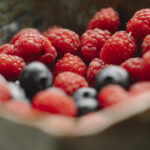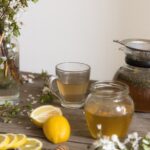Seed Saving Secrets: Harvesting for Happy Planting!
Gardening and planting enthusiasts know that saving seeds is a great way to ensure the sustainability of plant varieties. Saving seeds also saves money and allows you to grow your own plants year after year. However, saving seeds can be a bit tricky for those who are new to it. Here are some seed saving secrets to help you harvest and store seeds like a pro, and enjoy happy planting for years to come.
Plant like a pro: Here’s how to save seeds
To save seeds, you must first carefully choose the plants you want to propagate. Look for plants that have produced the most flavorful or fragrant fruits, vegetables or flowers. Once you’ve identified the right plants, allow the fruits or vegetables to mature fully on the plant, and then wait for them to dry and wither. For flowers, wait until the petals have wilted and dried up, and the seedpods become brown and cracked.
Next, remove the seeds from the mature plant and clean them thoroughly. For wet seeds, like tomatoes, pumpkins, and cucumbers, scoop out the seeds and pulp into a bowl and let the seeds ferment in water for a few days. The fermentation process helps remove the pulp and prevents fungal growth when stored. For dry seeds, like those from sunflowers or beans, you can simply remove them from the plant, let them dry on a screen for a few days, and then store them in an airtight container.
Get your hands dirty: Harvest and store your seeds
When harvesting seeds, it’s important to use clean tools and containers to prevent contamination. Use scissors or a knife to cut the seed heads from the plant and place them in a paper bag. For seedpods, collect them by hand and place them in a paper bag. Store the bags in a dry and cool place for a few weeks, shaking occasionally to help the seeds dry and release.
Once the seeds are dry, sift them through a fine mesh strainer to remove any debris. Store the seeds in a clean, dry, and airtight container in a cool and dark place. Don’t forget to label the container with the plant name and the date of harvesting. This will help you keep track of the seed’s age and viability.
The gift that keeps on giving: Happy planting with saved seeds
Saving seeds is a great way to grow plants that are well-suited to your local climate and conditions. By saving and planting your own seeds, you can create a sustainable and beautiful garden that will continue to thrive year after year. Moreover, saved seeds make great gifts for friends and family who share your love for gardening.
When planting saved seeds, be sure to follow the planting instructions for the specific plant variety. Remember that seeds saved from hybrid plants may not produce the same traits as the parent plant. So, if you want to maintain a specific trait or characteristic, save seeds from open-pollinated or heirloom varieties.
Now that you know how to save and store seeds like a pro, get your hands dirty and start harvesting! Whether you’re a beginner or an experienced gardener, seed saving is a fun and rewarding activity that allows you to grow your own plants, save money, and create a sustainable garden for years to come. So, grab your seeds, get planting, and enjoy the fruits (and vegetables) of your labor!




